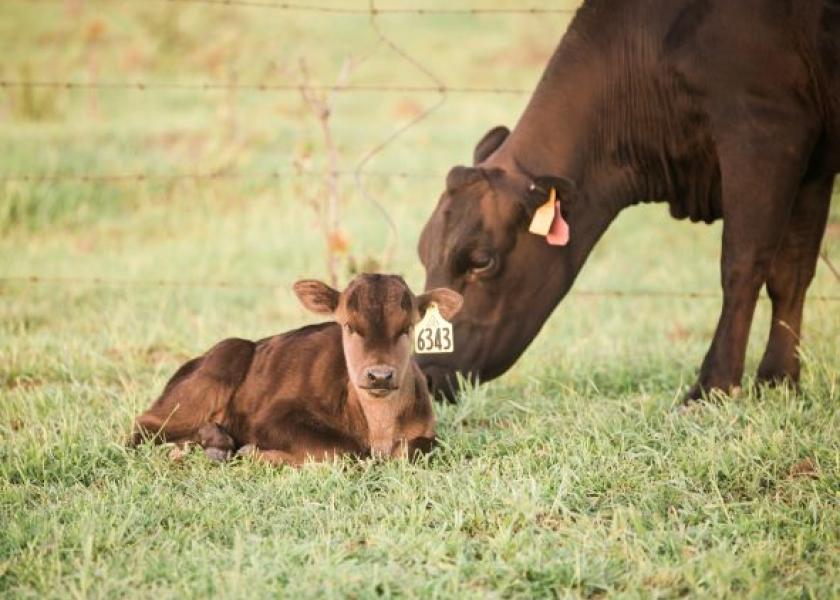The Steak That Changed It All, One Rancher’s Belief in the Wagyu Breed

“I’d never tasted anything that good in my life,” says Don Brown, president of Triangle B Ranch Inc. near Stigler, Okla. From a small family ranch to working at a software company to raising Maine Anjou and Angus, Brown’s idea of beef all changed when he enjoyed his first Wagyu steak.
In the mid-1990s, Brown set out to research this breed that was not yet popular in the U.S. He started out breeding his Angus and Maine Anjou cows with Wagyu semen to produce an F1 cross, continuing to learn and gather information. Along the way, Brown crossed paths with some people from Japan working for Shogo Takeda and the Wagyu breed. Brown ventured with them across a five-state area, introducing them to ranchers who might be interested in the breed. He explained some people didn’t have a lot of interest in the breed.
“When you look at Wagyu cattle, back in that day, they just look like a dairy animal,” Brown says.
He worked with Takeda’s organization to build his herd and seedstock genetics. With Brown’s experience in the show cattle business, he then began implanting Wagyu embryos to continue building his full-blood herd. With a lot of e¬ffort, the Triangle B Ranch is now home to many premium genetics available in the breed today.
Running around 500 cows, Brown continues to use artificial insemination and embryo transfer, particularly in making his seedstock bulls. Triangle B Ranch sells between 60 and 80 bulls each year, along with 100 to 120 open heifers. They currently feed out their steers, selling beef by cut directly to customers, and have been considering an opportunity using embryo transfer that would sustain a 25 head per week harvest schedule.
Brown’s feeder steers follow a three-step ration consisting of a minimum 60% corn and 5% fat. Time on feed and body condition ultimately determine when the animal is ready to harvest, with most finishing at approximately 30 to 36 months of age and 850 lb. to 1200 lb. hot carcass weight.
A number of beef businesses, including some high-end businesses supplying the Houston and Dallas, Texas markets, have taken advantage of Brown’s genetics to grow their own herds.
“If our customers are happy and they are successful, then we would ultimately be successful,” Brown believes.
His business proves this statement year after year as customers return for more of his genetics. Brown also finds value in educating his customers and helping them with their breeding plans each year.
Over the years, many Angus, Simmental and Charolais producers have bought Brown’s Wagyu genetics for their heifers to produce a smaller, low-birth-weight calf. Secondarily, as these producers fed out the calves and experienced the quality of beef, they have transitioned their herds to be full-blood Wagyu.
In a ‘Breed’ of its Own
Brown explains the Wagyu breed is not like any other beef breed. Breeders can’t expect to breed any Wagyu bull to any Wagyu cow and expect desirable progeny. “It’s all about the right genetics put together the right way,” Brown says. “That’s 40% of the equation. The other 60% is the husbandry and the feeding of those animals.”
Special attention is paid to the expected progeny difference (EPD) when buying Wagyu genetics. Phenotype and composition of the animal, pedigree of the sire and dam lines and expected breeding values (EBV) are important considerations when building a herd. Brown also uses a Japanese carcass camera to collect carcass data and to help with bull selection.
The Future of Wagyu
Starting out in the Wagyu breed, Brown encourages finding a mentor. Finding someone experienced who is willing to help with decision making and breeding and marketing strategies will be invaluable.
“Start off small and don’t jump in and put every last penny you have in it until you have really ¬figured it out,” he says. “You can waste a lot of money by buying the wrong genetics and putting them together the wrong way.”
The full-blood Wagyu market has shot up, Brown says, and consumers understand the difference and want the higher quality product. Considering the future of the breed, he says, “I’m getting old, but I’m still excited. The sky’s the limit. There’s no telling how much money a person can make.”







